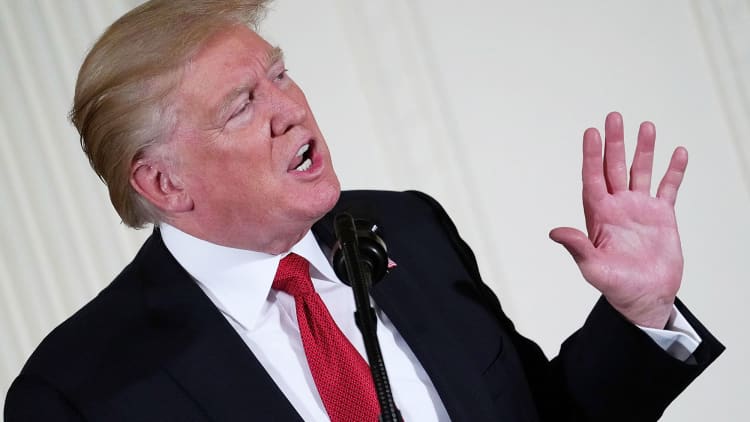
Tax reform is on the agenda this week and strategists at Morgan Stanley laid out how they think the stock market will react to the unfolding drama through the end of the year and maybe into 2018.
Lawmakers are expected to release the first draft of a tax reform bill this week. President Donald Trump touted it as "the biggest tax event in the history of our country" on Tuesday.
In a note to clients Monday, the strategists pointed out there are three potential outcomes to the tax reform saga: modest stimulus, substantial stimulus or failure.
The chart below sums up Morgan Stanley's market outlook depending on each of the three outcomes:
The first one, which has a 57 percent probability of taking place, is Washington coming up with a framework that provides a "modest stimulus" to the U.S. deficit in favor of economic, and ultimately, earnings growth.
"On net, we expect that a drop in the tax rate to 25% ... should provide about a 3% boost to forecast earnings," Morgan Stanley's strategists Michael Wilson, Adam Virgadamo and Todd Castagno said in the note.
They also said this outcome "is in-line with our target of 2,700," which represents 4.94 percent upside from Monday's close.
Market expectations for tax reform have recently picked up after the House passed a budget plan backed by the Senate last week. These expectations have helped stocks reach new all-time highs.
Another scenario that could play out is that lawmakers fail to move forward with a tax reform plan. Wilson, Virgadamo and Castagno said there is a 36 percent probability of this occurring.
"2017 has been an exceptional year for earnings growth," they said. "Absent tax cuts, we think the tough comp from 2017 sets a hurdle that is probably too high for the market to hit."
They also added that "in the event of a total failure of tax reform, some of the optimism priced in likely fades."
Still, they only see a near 1 percent drop for the S&P 500 if Washington does not enact tax cuts.
"The failure to deliver tax reform and the slower relative growth likely keep us on the path of gradual normalization in interest rate policy," said the analysts, who see the S&P 500 falling to 2,550 from its Monday close of 2,572.83.
The final — and least likely — scenario is one where lawmakers push through legislation that substantially adds to the U.S. deficit to pay for lower corporate taxes.
If this is the case, the S&P 500 could rally 6.9 percent to 2,750, they said, with small- and mid-cap stocks initially benefiting, along with sectors like energy, technology and materials. "But as 2018 unfolds and signs of the cycle stalling start to build, watch for relative outperformance from defensives as the multiples in Health Care, Staples, Utilities, and REITs fall by less than the market."
The likelihood of such a measure, however, is only 7 percent, according to the Morgan Stanley analysts.
WATCH: Cashin says traders mulling what indictments mean to Trump agenda



